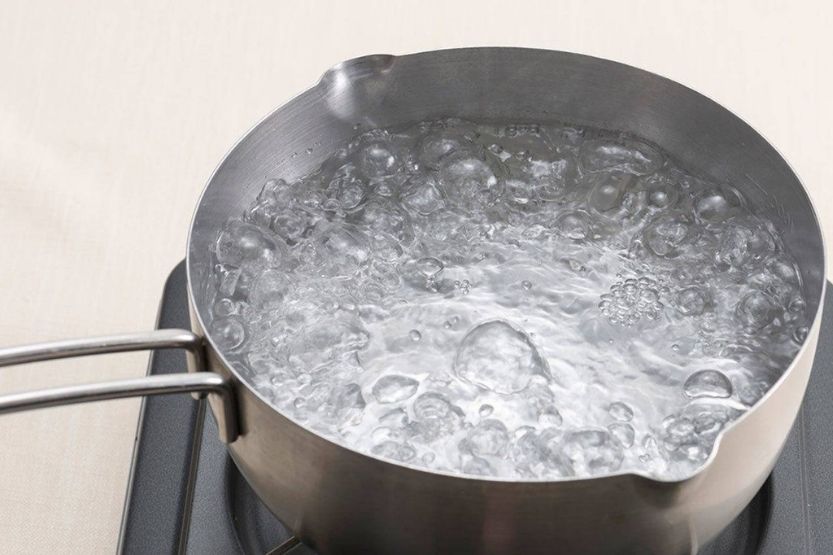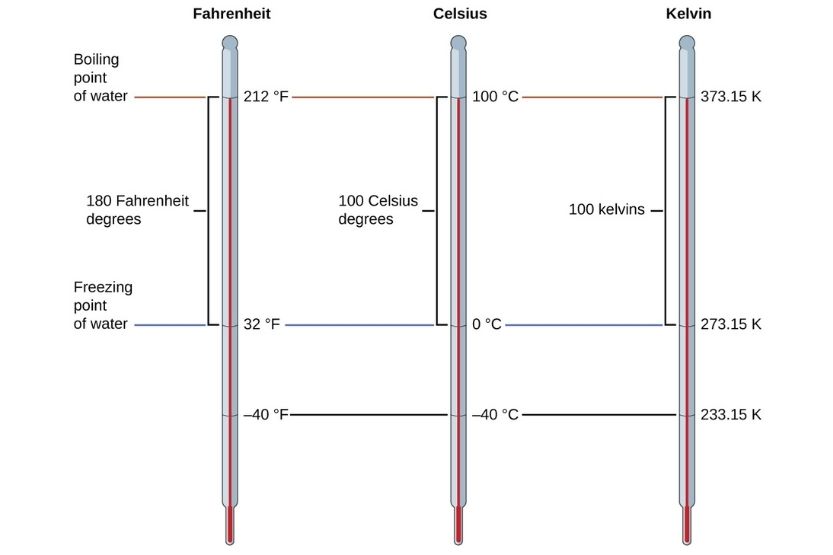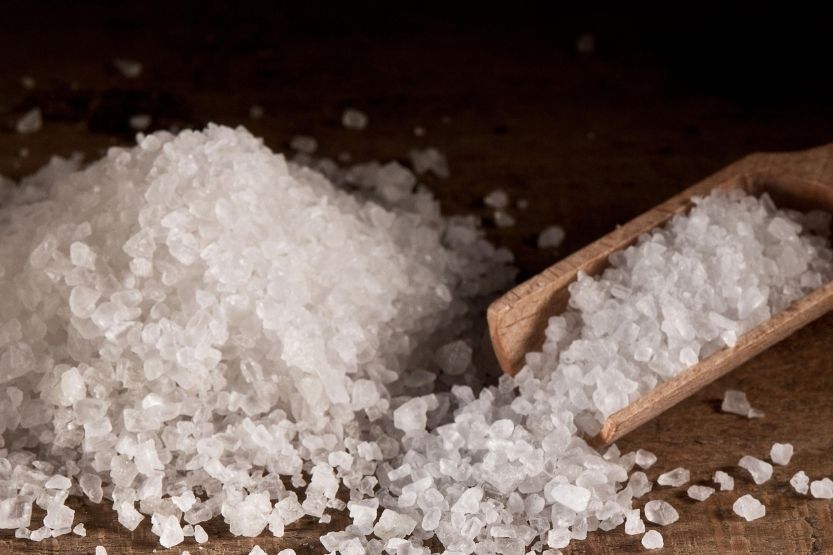Water Boils At 212 C
The boiling point of water is measured in Kelvin, Celsius, and Fahrenheit. It'southward useful to know each amount. What is the humid signal of water in Kelvin, Celsius, and Fahrenheit?
H2o boils at 373.2 K (Kelvin), 100ºC (Celsius), or 212ºF (Fahrenheit). When measuring temperature, the usual units are Celsius (degree Celsius) or Fahrenheit (caste Fahrenheit). However, when reporting temperatures in Kelvin, nosotros don't say "degree Kelvin."
Boiling bespeak of water:
- Kelvin: 373.2 K
- Celsius: 100ºC
- Fahrenheit: 212ºF
Read more than to learn about the boiling indicate of water in Kelvin, Celsius, and Fahrenheit.
What Is the Humid Point of Water in Kelvin?

H2o boils at 100ºC, and this is equivalent to 212ºF or 373.2 Kelvin. When reporting temperature measurements, people unremarkably use Celsius (degree Celsius) or Fahrenheit (degree Fahrenheit). However, when reporting using the Kelvin, nosotros don't say "caste Kelvin."
Ane of William Thomson's best-known contributions—also known as Lord Kelvin and 1st Businesswoman Kelvin—is the accented temperature scale (measured in Kelvin).
His work was inspired by the 1800s law stating that the pressure of an ideal gas (If kept at a abiding volume) changes directly with its absolute temperature (or Zero Kelvin).
Just a quick information well-nigh Ideal Gas:
An platonic gas follows the rules of the Platonic Gas Constabulary. In uncomplicated terms, this law states that when a fixed amount of ideal gas is squeezed, its temperature increases.
One real-life awarding of this police is engineering, wherein engineers figure out the correct containers to build for holding oxygen.
What is the boiling/condensation betoken of water in Kelvin? The boiling point of water on the Kelvin scale is 373.2 K. We don't insert the degree symbol (º) or the word "caste" to refer to a specific temperature on the Kelvin scale.
Every degree unit on the Celsius calibration is equal to 1 degree unit on the Kelvin calibration. Thus, we don't utilise the degree symbol when reading temperatures in this system.
It'south different from Celsius or Fahrenheit considering it doesn't accept negative numbers on its calibration. The lowest possible number is 0 K or absolute zero—the point at which a substance or object couldn't become whatsoever colder or has no heat energy left.
Kelvin is rarely used in daily life activities, like boiling water for your coffee and cooking. Instead, it'due south extensively used in the scientific community, specifically by physicists and chemists, for some formulas.
How to Stay Condom When Humid H2o in the Microwave
What Is the Boiling Point of Water in Celsius?
The lay public popularly uses Celsius in different parts of the world. That's not the instance in the Us, where it'due south mostly used past people in the engineering and scientific fields.
Celsius, which was previously called centigrade, is the Swedish astronomer and physicist Anders Celsius'due south brainchild. He proposed that the temperature of boiling water depends on atmospheric pressure, amid others.
The Globe is enveloped past a layer of gas, or what we call the atmosphere. This gaseous envelope has weight and would exert a downward strength on everything underneath it. This pressure level is called atmospheric pressure.
Atmospheric pressure level affects the boiling signal of water (or other liquids). If the atmospheric pressure increases, more free energy is necessary to eddy h2o. This also causes the boiling signal to be higher.
What is the boiling point in degrees Celsius of water?
Originally, Anders Celsius assigned cipher to represent water's boiling point and 100 to stand for h2o's freezing betoken.
This was afterward reversed by Carolus Linnaeus (or Carl Linnaeus), a Swedish botanist, md, and zoologist after Anders died. Then, 100ºC is now the boiling point of water, while 0ºC is the freezing point of water.
Advantages of Using Celsius Rather than Fahrenheit:
- At standard temperature (refers to 0° C or 15° C at sea level), Celsius is great for measuring water temperature using its 0 to 100 scale—for instance, when you heat milk. Since milk has a lot of water, it has the same boiling betoken equally h2o, approximately 100° C (depending on the atmospheric pressure);
- Celsius is part of the metric arrangement, which has been adopted by different countries worldwide. This makes information technology easier to communicate daily temperature measurements to people in other countries;
- It'southward simpler to convert temperature readings from Celsius to another temperature scale, like Fahrenheit; and
- Cypher is the freezing point, and 100 is the boiling signal. That's easy to recollect, correct?
What Is the Humid Indicate of Water in Fahrenheit?
Today, the Fahrenheit temperature scale is famous in a few Caribbean countries (due east.g., the Cayman Islands, Bahamas, and Belize) and the The states. Daniel Gabriel Fahrenheit, a German physicist besides equally engineer, adult this in 1724.

In Celsius, the boiling and freezing points of water are 100° and 0°, respectively. In Fahrenheit, those would exist 212° and 32°.
He came upwards with this temperature scale based on the 3 stock-still temperature points of the human trunk, freezing water, and a mixture of ice, table salt (ammonium chloride), and h2o. These 3 temperature points were believed to exist based on Rømer's system.
During the early 18th century, Ole Roemer—the Danish astronomer who first measured the speed of low-cal—used alcohol-in-glass thermometers to create his own temperature scale.
He assigned threescore as h2o's boiling indicate, 22.5 as the trunk's temperature, 0 degrees as the lowest point, and 7.5 equally the freezing point of pure water.
So, Gabriel Fahrenheit decided to expand on Roemer's scale organisation since his mercury thermometer is precise. What he did was he multiplied each value by iv.
Advantages of Using Fahrenheit over Celsius
Celsius is dandy for measuring water temperature. However, it's widely believed that Fahrenheit has nearly double the accuracy of Celsius. You can read the temperature on the Fahrenheit scale more accurately without using decimals or fractions since information technology has more degrees.
Another reward of Fahrenheit is it's usually better for measuring air temperature (than water). Every bit a result, information technology's an ideal crude guide for reporting the weather. Based on this temperature scale, you can relay 100 equally scorching weather, 50 as mild conditions, and 0 as freezing weather.
Factors That Determine the Boiling Betoken of Water
Three master factors touch the boiling betoken of water (or whatever liquid): atmospheric pressure, vapor pressure, and temperature. Let's talk over these in greater detail:
1. Atmospheric Force per unit area
The boiling point of h2o at standard atmospheric pressure is 212ºF (100ºC). As divers earlier, atmospheric pressure or air pressure is the force applied against a liquid'due south surface.
As a thumb dominion, the higher the atmospheric force per unit area, the more rut free energy is necessary to eddy a liquid—or in this case, water. This, in turn, raises the humid point.
If y'all were to have a microscopic view of this process, yous'd see air molecules (the smallest particles of an chemical element or a substance) running into the surface of the water. This creates pressure that's spread all over the water surface.
If the pressure is high, information technology will be difficult for water to turn into vapor and form bubbles. Thus, water doesn't boil. Withal, if this force per unit area is decreased, less heat energy is necessary to movement water into the vapor phase. Plus, water can boil at a lower temperature.
The boiling point of water volition also depend on your location. Distance, or the height above sea level, is closely linked with atmospheric pressure. The higher y'all get to a higher place sea level, the thinner the air becomes. The "thin" air has lower force per unit area and oxygen because of the issue of gravity.
At bounding main level, water usually boils at 212°F (100C°). However, at higher altitudes and lower atmospheric pressures, water boils at a lower temperature.
For every increase in distance of 500 feet, the h2o boiling point decreases by under ane°F. For example, at 5,000 feet (1524 meters), water boils at 202°F (94.5°C). Or, at 9500 feet (2895 meters), water boils at 194°F (ninety°C).
2. Vapor Pressure
Vapor pressure is the result of the evaporation of water or other liquids. It measures the ability of a liquid to transform from a gas state into a vapor state.
In case you're wondering, vapor and gas have a few differences. For instance, unlike vapor, gas isn't solid or liquid in its natural land, and it tin can't transform dorsum into any of those states. Information technology remains to be a gas in its natural state at room temperature.
Vapor pressure and the boiling point of a liquid (at atmospheric pressure) have an inverse human relationship. So, if water'due south vapor pressure level at a given temperature is high, the water'south normal humid point goes down.
The boiling point is low if the vapor pressure is high because less energy is necessary for a liquid to match the gas' pressure in a higher place it every bit it's existence heated.
3. Temperature
The temperature of the water will affect the vapor pressure. Information technology would be best if you got the water hot plenty to increment the speed of its particles.
By increasing the temperature of the water, more than water particles volition, at some point, gain sufficient energy to change into vapor, causing bubbles to form within the water and reach the surface.
These iii (atmospheric pressure, vapor pressure, and temperature) are the master factors that affect the boiling point of any liquid. Other things could increase or decrease a liquid'south boiling signal, such as the addition of nonvolatile solutes.
iv. Addition of Nonvolatile Substances
In general, nonvolatile solutes or substances increment the humid point because they don't allow vapor pressure in solutions. Two examples of these substances include salt and saccharide.
Salt

Salt doesn't actually cause a drastic increase in the boiling betoken of water. The increase is only effectually 32.9ºF (0.5ºC) for every 58 grams of salt per ane kilogram of water.
So, if you're adding 2 grams (0.v teaspoons) of salt to a liter of water, it wouldn't actually accept a large effect on the boiling bespeak. Now, if yous're going to add 20 grams (4.eight teaspoons) of salt, it would increase the boiling indicate of 5 liters of water from 212ºF (100ºC) to effectually 212.72ºF (100.4ºC)
Sugar
Dissolving sugar in water increases the humid signal and decreases the freezing point. But merely like salt, it doesn't cause a significant increase in the humid betoken of water (approximately 32.18ºF to 32.54ºF or 0.1ºC to 0.3ºC).
Other people besides believe that baking soda and pepper may raise the humid temperature of the water. They can, only but slightly. Pepper has the least result on the boiling point considering it doesn't really deliquesce well in liquids.
Tin H2o Be Hotter than Its Humid Signal of 212°F (100°C or 373.two Grand)?
Information technology tin. The process is called superheating. Superheated water is pressurized h2o, and information technology can reach the disquisitional temperature of 705°F or 374°C.
Nevertheless, you lot don't want to heat pure and bubble-free water above its normal humid point considering it could cause information technology to explode out of its container when it's disturbed.
How to Avoid This?
- If you're using an oven to oestrus water, you could forbid superheating by not using a container with a very smooth surface. A container with at least some scratching would suffice;
- You can also use a long, solid object to lightly tap the outside of the container while it'due south still in your oven. Please go on your hand outside the oven; and
- Of class, don't estrus it above its normal boiling temperature.
Conclusion – What Is the Boiling Betoken of Water in Kelvin, Celsius, and Fahrenheit?
Water boils upon reaching the 100ºC temperature. And this is equivalent to 212ºF or 373.2 1000 (Kelvin).
Boiling signal of water:
- Kelvin: 373.ii Thousand
- Celsius: 100ºC
- Fahrenheit: 212ºF
You'll notice that people commonly utilise Celsius (degree Celsius) or Fahrenheit (degree Fahrenheit). Nevertheless, when reporting a temperature measurement using the Kelvin unit, nosotros don't say "degree Kelvin."
Once again, the humid point of water in whatever unit of measurement (Celsius, Kelvin, and Fahrenheit) is influenced past many factors. Atmospheric pressure, vapor pressure, and temperature are iii of the main ones.
In the end, the boiling point of any liquid is all most the pressure exerted on its surface, not just the temperature.
Read side by side:
What Temperature Is Simmer
Tin You Put Chocolate in Coffee?
Water Boils At 212 C,
Source: https://howchimp.com/what-is-the-boiling-point-of-water/
Posted by: gonzalezabte1968.blogspot.com


0 Response to "Water Boils At 212 C"
Post a Comment